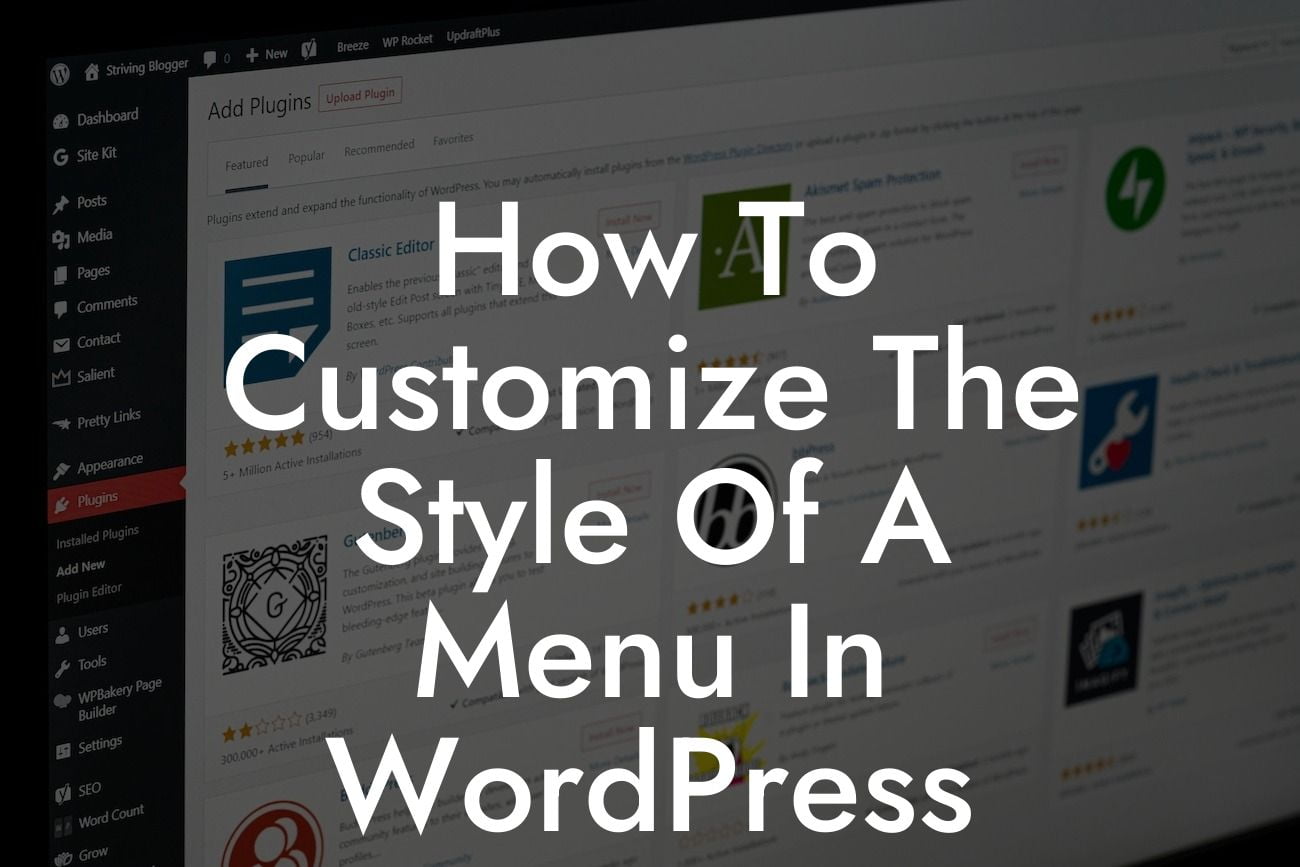Are you tired of the mundane and predictable menus on your WordPress website? Do you want to add a touch of creativity and personalization to your menu design? Look no further. In this guide, we will walk you through the process of customizing the style of a menu in WordPress, allowing you to create a visually stunning and captivating navigation experience for your visitors.
To begin customizing your menu in WordPress, follow these steps:
1. Access the WordPress dashboard: Log in to your WordPress website and navigate to the dashboard.
2. Locate the Appearance tab: Click on "Appearance" in the left-hand sidebar, and a drop-down menu will appear.
3. Choose the "Menus" option: Select "Menus" from the available options, and you will be directed to the menu editor.
Looking For a Custom QuickBook Integration?
4. Select the menu you want to customize: If you have multiple menus on your website, choose the one you wish to modify from the drop-down list.
5. Customize the menu structure: Rearrange the menu items by dragging and dropping them into the desired order. You can also add new items by selecting the appropriate options from the left-hand side of the editor.
6. Modify the menu's style: Click on the "Manage Locations" tab at the top of the editor. Here, you can choose different menu locations for your theme and customize the appearance by clicking on the "Customize" button next to each location.
7. Edit the CSS of the menu: If you have coding knowledge, you can further enhance the style of your menu by accessing the CSS editor. Use suitable H2, H3 headings tags, bullet point lists, and ordered lists to create a visually appealing and structured menu.
How To Customize The Style Of A Menu In Wordpress Example:
Let's say you have a fashion blog, and you want your menu to reflect the chic and trendy vibe of your website. With customizations, you can change the font, color, and layout of the menu to match your brand. Imagine having a sleek and elegant menu that seamlessly blends with your overall website design. You can achieve this by following the steps mentioned above.
Congratulations! You have successfully learned how to customize the style of a menu in WordPress. Now, it's time to unleash your creativity and make your website stand out from the crowd. With DamnWoo's range of WordPress plugins designed exclusively for small businesses and entrepreneurs, you can take your online presence to the next level. Explore our other guides and try one of our awesome plugins to elevate your success. Don't settle for ordinary – embrace the extraordinary with DamnWoo.













